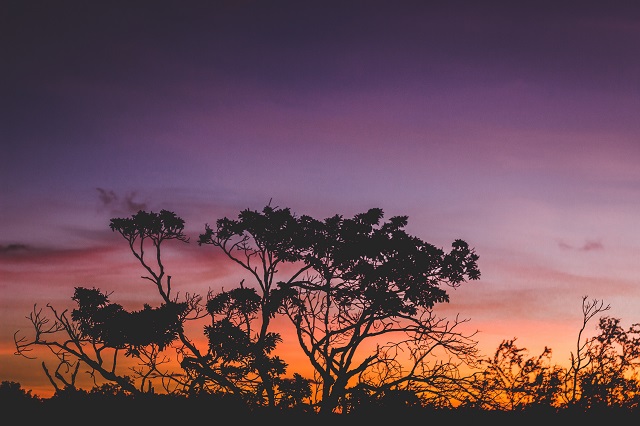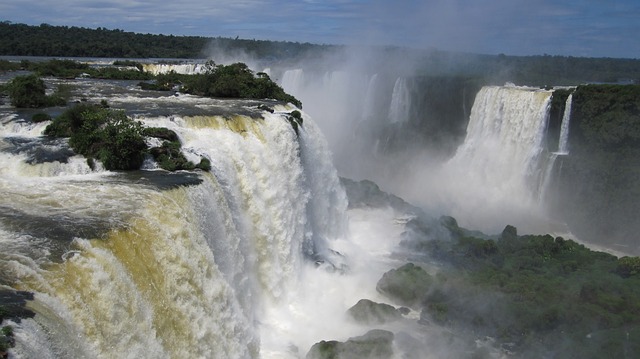Best Parks and Nature Reserves from Around the World
By Sarah V. Hines, on August 16, 2018
Vacations used to be about lounging around, seeing local points of interest and snapping a couple of pictures for photo albums. The most attention often went to what sort of luxuries the local hotels had to offer, how close they were to the beach and what rental cars were available. Pictures on a disposable camera were enough to suffice to make everybody happy.
With social media, the focus of vacation has shifted. Particularly with the app, Instagram, people are now able to catch amazing photos, augment the natural beauty with filters and post their best shots to share with the world. Cameras are no longer bought in packages at a drugstore counter. Now, phone cameras have come to have almost professional-style quality, and there are lighting and photo extensions that can help capture a picture worth of magazine publishing.
So where can you catch the best outdoor pictures? What should you know about traveling to get up close and personal with nature? Many countries are making big steps in preserving their natural beauty by establishing national parks, nature reserves and conservatory locations. Below are four locations guaranteed to get some likes on your Instagram and important things to consider when traveling in the great outdoors.

Serengeti National Park—Tanzania
Serengeti National Park is one of the most famous parks in the world. The park is made up of over 5,700 square miles of land and is home to many endangered species, including the black rhinoceros. Tours, lodging and activities are located within the park itself, and you will be afforded the chance to see some of the rarest species of birds, mammals and reptiles in the world.

Iguaçu National Park—Brazil
Designated a UNESCO World Heritage Site, Iguaçu National Park in Brazil represents a massive conservation effort of native plants and animals, as well as an amazing panoramic view of the towering Iguazu Falls, waterfalls that share the borders of Brazil and Argentina. The park exemplifies the fantastic beauty of Brazil, as well as the country’s decades-long commitment to protecting its natural environment and studying the unique life that thrives within its many forests.

Ranthambore National Park—India
Just outside of the beautiful Jaipur, India, Ranthambore National Park is one of India’s leading conservation sites. The stars of their show are the Bengal tigers that can be seen during all hours of the day on guided tours as they wander freely around the reserve. Though certainly commanding attention, tigers aren’t the only residents of the reserve; leopards, hyenas, flying foxes, mongooses and more can be seen at any given point throughout the reserve.

Dinghu Mountain Nature Reserve—China
Dinghu Mountain Nature Reserve is located near the beautiful city of Zhaoqing. It was China’s first nature reserve, established in 1956. Spanning over 2000 acres of subtropical forest, the reserve is home to over 170 species of birds and 50 species of animals (including 20 unique species of pythons)
For all locations, a visa is required before you board your plane. When visiting a nature reserve, keeping important details in mind can be crucial. One way to plan is to answer the following questions and pack appropriately:
- What is the weather like in this location during your travel? Is it hot and dry? Cold and wet? What clothing items will you need to protect you from any damp weather that you may encounter?
- What are common pests? Mosquitoes? Large flies? Should you pack certain colors that deter these pests? Should you avoid any types of fragrances? Should you pack long-sleeved shirts for your hike?
- How intense is the excursion? Will you be walking or hiking uphill? Will you be moving mostly by vehicle? Plan to have the appropriate amount of water or snacks for the level of activity that you will be undertaking.
- What do poisonous plants in the area look like? Are their venomous animals? Do you have access to a first aid kit and know the way to contact the local emergency services?
- Are there any current instances of illnesses? Is it suggested to get specific shots or vaccines before your travel? Should you avoid eating any potentially contaminated food? Are there places that are deemed unsafe to swim which usually welcome people?
- All locations mentioned above have a vast array of plant life. Are there any that you’re allergic to? Should you have allergy medicine on hand? (Watery eyes and obnoxious sneezing may mean missing some of the unfathomable beauty around you.)
Being prepared for the environment you’re exploring will help keep your attention on the treasures that the land has to offer. It’s important to plan accordingly, which often includes traveling light, packing the correct type of footwear for the exploration and bringing plenty of water.
It’s always a good idea to make sure that you have access to maps with clearly marked trails. In the event that you’re unsure of traveling alone, (as you should never go hiking alone) or have a group that is less-than-confident about the area, most places offer guide services staffed with experts that know the area well. This also comes with an added bonus of having somebody that can point out interesting plants, animals and locations that you might have missed before.
A final thing to consider is what type of imprint you leave behind. Ideally, you’ll want to have as little an impact as possible on the area that you’re exploring. This is done by cleaning up any sites you rest or camp at, never throwing wrappers on the ground, never emptying any liquid other than water out, and making certain that any guide service you use takes efforts to be as green as possible.
While America most certainly has its share of amazing natural beauty, there is a whole world of exploration awaiting anybody that is looking for it. With great planning beforehand, you can spend your time admiring a one of a kind experience that you will never be able to stop talking about. Make sure that whatever you are taking pictures with is fully charged and holds plenty of space. Enjoy the trip and the beauty around you.
Comments
dasdas
